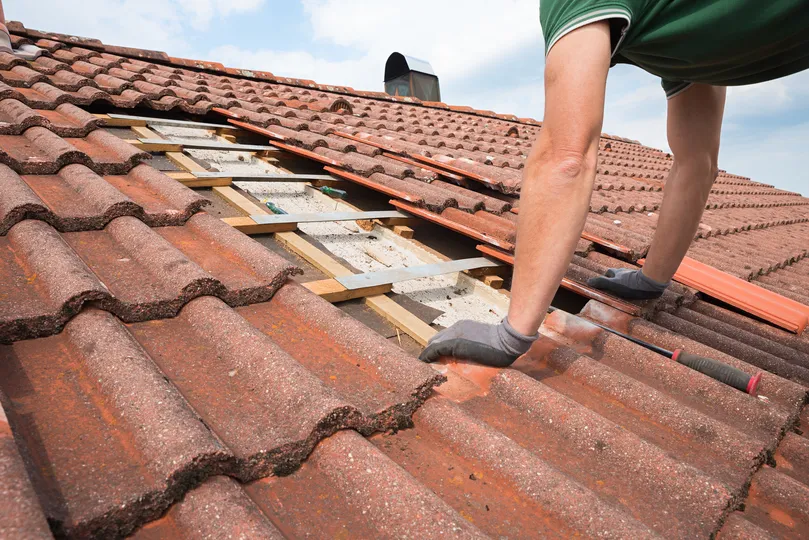
A tile roof provides an impressive combination of durability, aesthetic appeal, and energy efficiency, especially in coastal and sunny climates. These roofing systems are designed to withstand decades of exposure, yet subtle signs of damage can compromise their long-term performance. Regular assessments by trained specialists ensure that minor issues are identified early, preserving structural integrity and protecting property value.
Engaging experienced professionals, such as AWS Roofing, offers precise evaluations that extend the lifespan of tile installations. Experts assess tiles, underlayment, flashings, and drainage, detecting issues invisible to untrained eyes. Early intervention reduces costly repairs and maintains functionality and visual appeal. This article will explore five clear signs indicating a tile roof requires professional inspection or immediate repair.
- Displaced or Broken Tiles
Displaced, cracked, or missing tiles indicate structural stress or previous impact from storms or debris. Professionals examine the roof systematically, noting areas where tiles have shifted from their intended positions. Minor fractures or loosened sections allow moisture infiltration, which can lead to the deterioration of underlying materials.
Technicians lift surrounding tiles to inspect underlayment for hidden damage or water intrusion. Repair strategies focus on replacing individual tiles or reinforcing weak sections without disturbing the entire roof. Monitoring these irregularities early prevents widespread deterioration and safeguards interior spaces from water damage.
- Accumulated Debris and Blocked Drainage
Debris, leaves, and dirt can gather in valleys, gutters, and around roof penetrations, creating standing water or localized rot. Inspections ensure proper water flow and remove materials that obstruct drainage systems, which can accelerate wear. Professionals use specialized tools to assess whether scuppers or downspouts are functioning efficiently.
Blocked drainage leads to weight accumulation and stresses tiles, increasing the likelihood of cracks. Recommendations include cleaning and minor repairs to prevent future clogging. Maintaining clear channels reduces damage while extending the lifespan of the entire roofing system.
- Signs of Water Intrusion or Staining
Water stains on ceilings, attic spaces, or fascia boards suggest leaks or compromised underlayment beneath tiles. Experts carefully trace the source, distinguishing between surface moisture and deeper structural compromise. Common causes include cracked tiles, loose flashings, or damaged sealants around penetrations.
Moisture sensors and infrared tools help locate hidden pockets of water without the need for invasive procedures. Once identified, repairs target the root cause rather than just superficial symptoms. Prompt remediation prevents mold growth, maintaining indoor air quality and prolonging roof longevity.
- Granule Loss and Surface Wear
Tile surfaces may show signs of wear, such as fading, erosion, or thinning granules, indicating exposure to intense sun or environmental stressors. Inspectors assess the degree of surface degradation and its impact on weatherproofing and fire resistance. Eroded tiles can compromise roof insulation, which in turn affects energy efficiency over time.
Technicians recommend partial replacement or surface treatments to restore protection without complete roof replacement. Documenting wear patterns allows property managers to plan maintenance cycles effectively. Addressing surface deterioration early ensures aesthetic appeal and functional performance remain intact.
- Cracks or Damage Around Flashings and Penetrations
Areas surrounding chimneys, vents, and skylights that experience concentrated stress are common entry points for water. Roofing specialists inspect these intersections for cracks, gaps, or loose material, ensuring the seals remain watertight. Failure in these zones leads to interior leaks and secondary damage to ceilings or insulation.
Repairs may include resealing, reinforcing, or replacing compromised sections to maintain the complete system integrity. Professionals document and monitor these areas to prevent recurrence. Regular inspections in vulnerable zones provide peace of mind and significantly reduce emergency repair costs.
Tile roofs demand careful monitoring to preserve their visual appeal and protective qualities. Homeowners and property managers benefit from inspections that detect hidden damage and address wear and tear efficiently. Partnering with skilled teams like AWS Roofing guarantees accurate assessments, timely repairs, and long-term reliability. Proactive evaluation transforms maintenance into a strategic approach, protecting investments while extending the functional lifespan of each tile.



